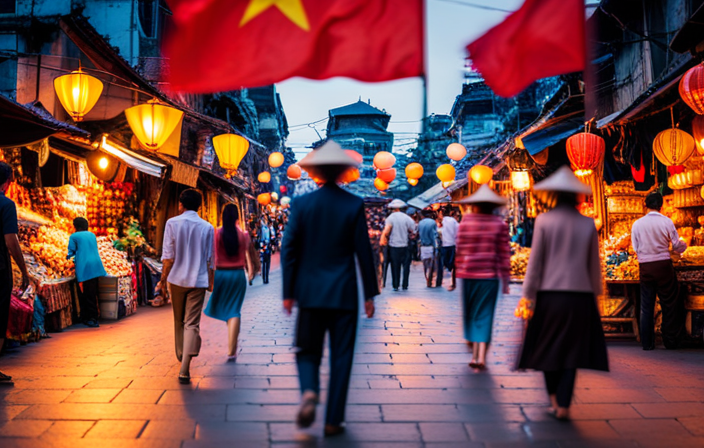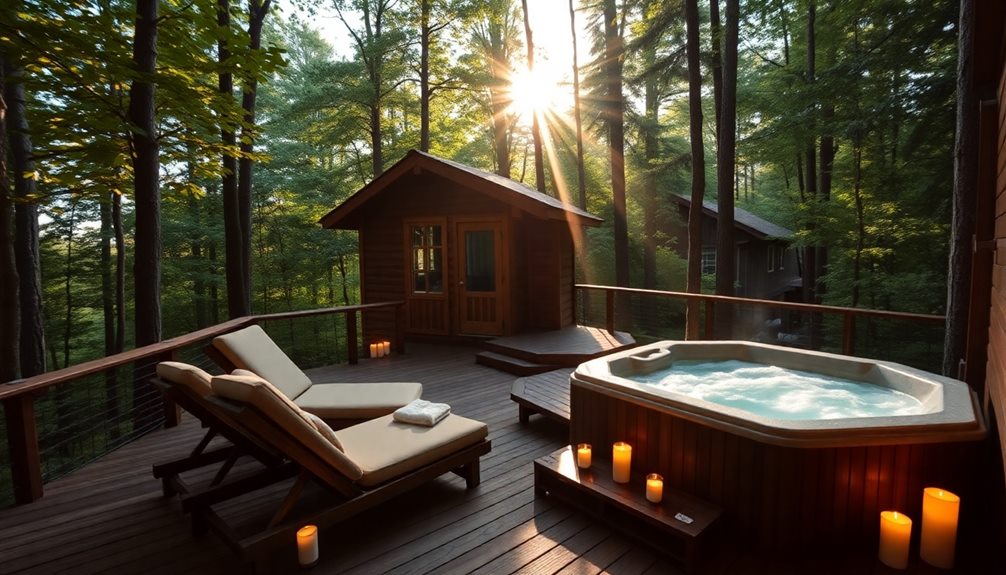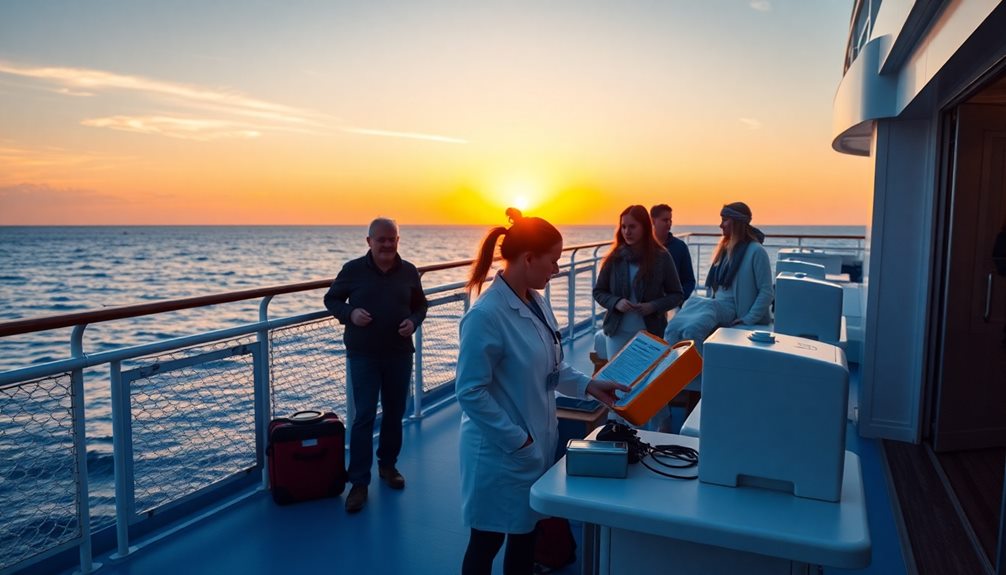While planning my dream vacation to Maui, I discovered that Hawaii has recently implemented a tax on hotels and short-term lodgings. This tax, which is set at 3%, is expected to generate substantial revenue for beloved tourist destinations like Maui.
With estimates ranging from $50 to $70 million, this tax doubles the previous revenue and was introduced through House Bill 862. Despite Governor David Ige’s initial veto, lawmakers overrode it, and the changes will now take effect.
Let’s delve into the implications and how this tax will impact our vacation plans.
Key Takeaways
- The new hotel tax in Hawaii imposes a 3% tax on hotels and short-term rentals, aiming to generate estimated revenue of $50 to $70 million for popular tourist destinations like Maui.
- This tax doubles the revenue compared to the previous law and was introduced through House Bill 862. Counties also have the ability to charge their own tax and keep the fund.
- Governor David Ige initially vetoed House Bill 862 due to concerns about the tourism authority’s funding and managing the influx of tourists, as well as potential revenue disparities between islands and counties. However, lawmakers overrode the veto and the changes will now take effect.
- The funding shift for the Hawaii Tourism Authority means that its budget will now come from federal coronavirus relief funds, reducing reliance on income from tourism revenue. This change in funding distribution is due to House Bill 862.
Overview of the New Hotel Tax in Hawaii
I think it’s important to understand the overview of the new hotel tax in Hawaii. The tax includes a 3% charge on hotels and short-term rentals. This is expected to generate an estimated revenue of $50 to $70 million for popular tourist destinations like Maui.
The new tax doubles the revenue compared to the previous law. It was introduced through House Bill 862.
The implementation of this tax will have an impact on local businesses and the tourism industry. Local businesses, especially those in the hospitality sector, will have to adjust their pricing and strategies to accommodate the tax.
The effects on the tourism industry may include potential changes in visitor numbers and spending patterns. It will be interesting to see how this new tax will shape the future of tourism in Hawaii.
Implications of the 3% Tax on Hotels and Short-term Rentals
With the implementation of the 3% tax on accommodations, visitors to Maui will experience an increase in their expenses. This new tax will have significant impacts on the tourism industry and economic implications for the local economy. Here is a table showing the estimated revenue from the tax:
| Destination | Estimated Revenue (in millions) |
|---|---|
| Maui | $50 – $70 |
The introduction of this tax doubles the revenue compared to the previous law and will provide much-needed funds for infrastructure improvements and local housing. While the tax may add to the expenses for tourists, it will contribute to the development and maintenance of the island’s facilities and services. The local government’s initiative to impose the tax shows a quick response to the opportunity to generate additional revenue. Overall, the 3% tax on accommodations in Maui will have both positive and negative impacts on the tourism industry and the local economy.
Increased Revenue and Its Impact on Popular Tourist Destinations
The increased revenue from the new tax has a significant impact on popular tourist destinations like Maui. The estimated revenue of $50 to $70 million will have implications for local businesses and could potentially lead to an increase in visitor costs.
With the doubling of revenue compared to the previous law, the new tax brings in much-needed funding for infrastructure improvements and local housing. However, there are concerns about the potential disparities in revenue between different islands and counties.
Despite these concerns, officials on Maui are fast-tracking the implementation of the tax, recognizing the opportunity to generate additional revenue. As travel restrictions in Hawaii ease due to high vaccination rates, there has been an increased influx of visitors to the state since the beginning of 2021.
The new tax will play a crucial role in supporting the tourism industry and its impact on local businesses.
Understanding House Bill 862 and Its Introduction
Introduced through House Bill 862, the new tax aims to generate additional revenue for infrastructure improvements and local housing.
-
Impact on local businesses: The implementation of the new tax may have various impacts on local businesses in Hawaii. Some businesses, especially those in the hospitality industry, may experience a decrease in demand as tourists may be deterred by the additional tax. On the other hand, local businesses that provide goods and services to support infrastructure improvements and housing projects may benefit from the increased revenue generated by the tax.
-
Public opinion on the new tax: Public opinion on the new tax is divided. Some people believe that it is necessary to generate additional revenue for much-needed improvements in infrastructure and local housing. They see it as a way to support the growth and development of the community. However, others argue that the tax may discourage tourism and have negative impacts on the local economy. They are concerned about the potential loss of jobs and decrease in business activity.
Governor’s Veto and Concerns About Tourism Management
I believe Governor David Ige’s veto of House Bill 862 raises valid concerns about the funding and management of tourism in our state.
The veto stems from concerns about the tourism authority’s ability to effectively handle the influx of tourists and the potential for revenue disparities between islands and counties.
With the new hotel tax in place, there is a doubling of revenue compared to the previous law, with estimates ranging from $50 to $70 million for popular tourist destinations like Maui.
However, the veto raises questions about how this revenue will be managed and distributed. It is essential to ensure that all islands and counties benefit equitably from the funds generated by the tax.
The concerns about tourism management and potential revenue disparities must be addressed to ensure a fair and sustainable tourism industry in our state.
Lawmakers Override the Veto – What It Means for Tourists
After Governor David Ige vetoed House Bill 862, concerns were raised about the potential impact on tourism management and the influx of tourists. However, lawmakers decided to override the veto, meaning that all the outlined changes, including the new hotel tax, will now take effect.
This has significant implications for tourists visiting Hawaii, particularly in terms of their spending. The introduction of the 3% tax on hotels and short-term rentals is expected to double the revenue generated compared to the previous law. This increased revenue has the potential to create disparities between the various islands and counties, as each county has the ability to charge its own tax and keep the fund.
Therefore, tourists may experience varying costs depending on their chosen destination within Hawaii.
Funding Shift for the Hawaii Tourism Authority
The funding for the Hawaii Tourism Authority will now come from federal coronavirus relief funds, reducing reliance on income generated through tourism revenue.
This shift in funding has significant implications for local businesses and the future plans for tourism development.
With the decrease in dependence on tourism revenue, local businesses may experience a decline in financial support. However, the injection of federal relief funds could potentially offset this impact and provide a lifeline for struggling businesses.
As for future plans for tourism development, the shift in funding source may prompt a reevaluation of priorities. The Hawaii Tourism Authority may now have the opportunity to focus on sustainable and community-centered tourism initiatives, ensuring the long-term viability and resilience of the industry.
It remains to be seen how this funding shift will shape the future of tourism in Hawaii and its impact on local businesses.
Less Reliance on Tourism Revenue – Federal Coronavirus Relief Funds
With the funding shift to federal coronavirus relief funds, there is now a reduced reliance on tourism revenue in Hawaii. This change has had a significant impact on the local economy. Here are four key points to consider:
-
Decreased reliance on tourism revenue: The Hawaii Tourism Authority’s budget will now come from federal relief funds, reducing the need for income raised through tourism.
-
Change in funding distribution: The 10% transient accommodations tax will no longer be the primary source of funding. Instead, counties have the ability to charge their own tax and keep the fund.
-
Increased funding from relief funds: The shift in funding is a result of House Bill 862, which introduced a new hotel tax. This change doubles the revenue compared to the previous law.
-
Potential economic impact: While the reduced reliance on tourism revenue may provide stability during uncertain times, it is essential to monitor the long-term impact on the local economy. The success of the federal relief funds in sustaining Hawaii’s economy will be crucial for the state’s recovery and future growth.
Changes in Funding Distribution and County Taxes
I support the changes in funding distribution and county taxes as they provide an opportunity for increased revenue and local control. The new hotel tax in Hawaii, introduced through House Bill 862, allows counties to charge their own tax and keep the funds. This means that popular tourist destinations like Maui can generate an estimated $50 to $70 million in revenue, doubling the previous amount. The impact on local businesses is significant, as this additional revenue can be used for infrastructure improvements and local housing. The table below illustrates the changes in funding distribution and county taxes:
| Changes in Funding Distribution and County Taxes |
|---|
| – Counties can charge their own tax and keep the fund |
| – Increased revenue for local businesses |
| – Opportunity for infrastructure improvements and local housing |
| – County autonomy in tax decisions |
Overall, these changes empower counties to have more control over their tax decisions, benefiting local businesses and allowing for targeted investments in the community.
Implementation of the New Tax on Maui
Implementing the new tax on Maui has been a priority for officials. We are fast-tracking the motion to begin charging tourists an extra 3% tax. This new tax will have a significant impact on local businesses and could potentially lead to a decrease in tourist arrivals.
Here are three key points to consider:
-
Increased financial burden on local businesses: The additional 3% tax on hotels and short-term rentals will directly affect the cost of accommodations for tourists. This could potentially deter some visitors from choosing Maui as their destination, impacting local businesses that rely heavily on tourism.
-
Competitiveness with other destinations: With the implementation of this new tax, Maui may become less competitive compared to other tourist destinations that do not have such a tax. Tourists may opt for alternative locations where the cost of accommodations is lower, resulting in a decrease in tourist arrivals to Maui.
-
Potential decline in revenue: While the new tax aims to generate additional revenue for infrastructure improvements and local housing, there is a possibility that it could backfire. If the increase in prices deters a significant number of tourists, the overall revenue generated could potentially decrease instead of increase, leading to unforeseen consequences for the local economy.
It is crucial for officials to carefully monitor the impact of this new tax and make adjustments if needed to ensure the long-term sustainability of the tourism industry on Maui.
Travel Restrictions and Vaccination Rates – How They Affect Your Maui Vacation
Lifting travel restrictions in light of high vaccination rates has led to an increase in travel to Maui since the start of 2021. The impact of travel restrictions on tourism has been significant, with more people now able to visit and enjoy the beauty of the island.
The high vaccination rates in Hawaii, with nearly 60% of Hawaiians fully vaccinated against COVID-19, have played a crucial role in easing these restrictions. This has given visitors confidence in their safety while traveling.
Additionally, visitor safety measures are being implemented to ensure a safe and enjoyable experience for everyone. These measures include enhanced cleaning protocols, mandatory mask-wearing in certain areas, and social distancing guidelines.
With the combination of lifted travel restrictions, high vaccination rates, and visitor safety measures, Maui is experiencing a resurgence in tourism, bringing economic benefits to the island.
Frequently Asked Questions
How Will the New Hotel Tax in Hawaii Affect the Cost of My Vacation in Maui?
The new hotel tax in Hawaii will affect the cost of my vacation in Maui by increasing the overall expenses. This may impact local businesses and potentially reduce the affordability of accommodations for visitors.
What Is the Purpose of the Extra 3% Tax on Visitors to Maui?
The extra 3% tax on visitors to Maui aims to generate additional revenue for the government and fund infrastructure improvements and local housing. It may impact the tourism industry and affect government revenue.
How Will the Increased Revenue From the New Hotel Tax Impact Popular Tourist Destinations Like Maui?
The increased revenue from the new hotel tax will have a significant impact on popular tourist destinations like Maui. It will provide funding for infrastructure improvements and local housing, enhancing the overall experience for visitors.
What Were the Concerns That Led to Governor David Ige Vetoing House Bill 862?
The concerns that led to Governor David Ige vetoing House Bill 862 were related to the funding and management of the tourism authority, potential revenue disparities between islands and counties, and the influx of tourists.
How Will the Funding Shift for the Hawaii Tourism Authority Affect the Tourism Industry in Maui?
The funding shift for the Hawaii Tourism Authority will have a significant impact on the tourism industry in Maui. It will reduce reliance on tourism revenue and provide more funding for infrastructure improvements and local housing.
Conclusion
In conclusion, the new hotel tax in Hawaii is expected to have a significant impact on vacationers visiting Maui. With the implementation of a 3% tax on hotels and short-term rentals, the state is projected to generate substantial revenue ranging from $50 to $70 million.
This increase in funding, which doubles the previous amount, is aimed at supporting infrastructure improvements and local housing. While Governor David Ige initially had concerns about the funding and management of the tourism authority, lawmakers overrode his veto, ensuring that the changes will take effect.
Interestingly, the funding for the Hawaii Tourism Authority will now come from federal coronavirus relief funds instead of relying heavily on tourism revenue. Additionally, counties have the option to charge their own tax and retain the funds, allowing for potential revenue disparities between islands and counties.
It is important to note that the implementation of the new tax on Maui is being expedited, indicating the urgency in generating additional revenue. Overall, with travel restrictions easing and a high vaccination rate in Hawaii, vacationers planning their perfect Maui getaway should be aware of the implications of this new hotel tax.
Claire, a creative soul with an unquenchable thirst for storytelling, is an integral part of the Voyager Info team. As a dedicated writer, she weaves captivating narratives that transport readers to enchanting cruise destinations and beyond.
Claire’s love affair with writing began at an early age when she discovered the magic of words and their ability to craft worlds and emotions. Her innate curiosity led her to explore various literary genres, but it was travel writing that truly captured her heart. Drawing inspiration from her own globetrotting adventures and encounters with diverse cultures, Claire embarked on a journey to become a travel writer par excellence.











